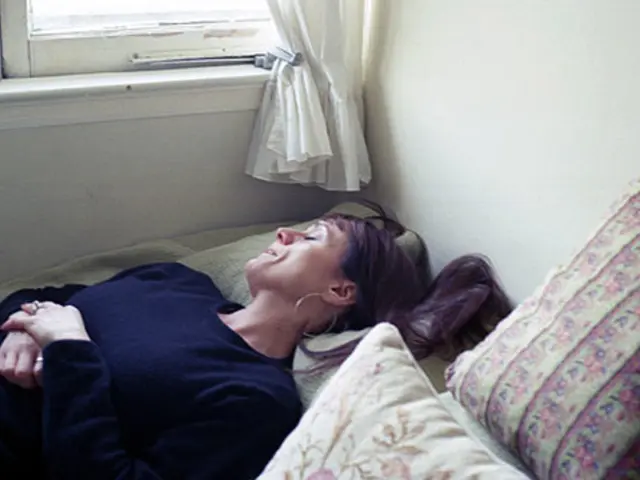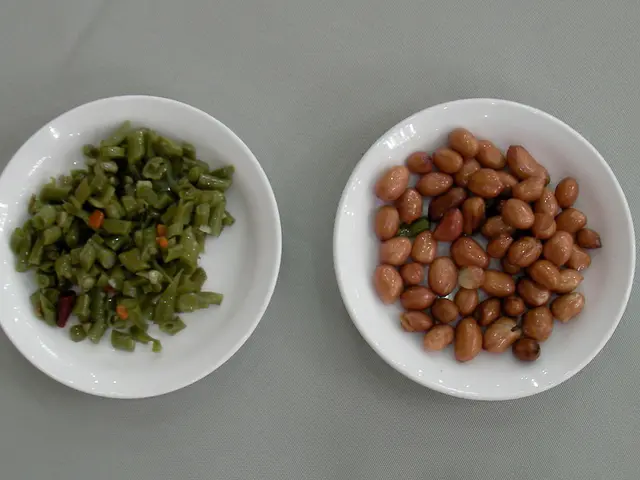Utilizing the Five Senses for Stress Reduction: Aid Anxiety through Sensory Experiences
The 5 Senses Anxiety Relief Method, also known as the 5-4-3-2-1 grounding technique, is a powerful tool for reducing anxiety, managing stress, and building emotional resilience. This mindfulness practice uses your five senses to anchor you in the present moment, providing a practical and accessible way to calm your nervous system and interrupt anxious thought patterns.
How Does the 5 Senses Method Work?
The 5 Senses Anxiety Relief Method involves systematically focusing your attention on:
- 5 things you can see - This could be anything from a book on your coffee table, to the leaves on a tree outside your window, or the colour of your shoes.
- 4 things you can touch - This could be the texture of a favourite mug, the coolness of a fan, or the warmth of a blanket.
- 3 things you can hear - This could be the sound of birds chirping, the hum of a fridge, or the rhythm of your own breathing.
- 2 things you can smell - This could be the scent of a candle, the aroma of fresh coffee, or the smell of rain.
- 1 thing you can taste - This could be a piece of candy, a sip of herbal tea, or the taste of your own saliva.
This process distracts from anxious thoughts by reconnecting you with your immediate environment through sensory awareness, helping to calm the nervous system and reduce feelings of panic or overwhelm.
Benefits of the 5 Senses Method
The 5 Senses Method offers more than just anxiety relief; it helps you become more present, more connected, and more in tune with your body. Here are some of its benefits:
- Activates the parasympathetic nervous system - Signaling safety and helping the body shift out of "threat detection" mode common in anxiety.
- Strengthens mindfulness and emotional regulation skills - Allowing individuals to stay more grounded during stress and recover more quickly from emotional distress.
- Can be combined with other practices such as body scans, progressive muscle relaxation, and meditation - To deepen emotional regulation and resilience.
Using the 5 Senses Method Effectively
To use the method effectively, when you feel anxious or stressed, take a moment to deliberately name and notice sensory inputs in the order above. This anchors your attention in the present moment, promotes calmness, and interrupts anxious thought patterns immediately.
Tips for Sensory Grounding
- Start during calm moments to build the habit.
- Combine grounding with deep breathing or gentle movement.
- Track which sense works best for you in different moods.
- If one of your senses is impaired, focus on the senses that are most accessible to you.
Sensory Grounding Beyond Anxiety Relief
Sensory grounding techniques can be used in various situations such as public speaking nerves, work stress or burnout, emotional overwhelm, social anxiety events, transitions, and more. They can also be used by children, teens, and adults, with adjustments based on their preferences and understanding.
DIY Sensory Grounding Tools
A DIY scent jar for instant grounding involves soaking cotton balls in a few drops of essential oil, placing them inside a jar, and opening and inhaling the scent as needed for grounding. Sensory grounding can also incorporate playful elements like colourful objects, calming scents, or favourite snacks.
Sensory Grounding Recipes
Aromatic herbal tea is a sensory grounding recipe that involves adding dried herbs to a tea infuser, pouring hot water, steeping for 5-7 minutes, and sipping slowly while focusing on the warmth, scent, and flavor.
In summary, the 5 Senses Anxiety Relief Method is a practical, accessible grounding technique that uses your five senses to interrupt anxiety and strengthen your ability to manage stress and regulate emotions over time. Try one sensory grounding method today, notice what works for you, keep it simple, stay curious, and journal your experience. Over time, you'll build your own personalized toolkit for peace.
[1] Boss, M. A. (2011). Grounding techniques in psychotherapy: A review and recommendations for practice. Journal of Psychotherapy Integration, 21(3), 266-278.
[2] McNally, R. J., & Hofmann, S. G. (2013). The oxidative stress hypothesis of panic disorder: A review and test of the model. Depression and Anxiety, 30(9), 807-816.
[3] Firestone, G. S., & Catanzaro, A. (2013). Mindfulness-based interventions for anxiety: A comprehensive meta-analysis. Clinical Psychology Review, 33(6), 763-771.
[4] Hölzel, B. K., Lazar, S. W., Gard, T., Schuman-Olivier, Z., Vago, D. R., & Ott, U. (2010). How does mindfulness meditation work? Proposing mechanisms of action from a conceptual and neural perspective. Perspectives on Psychological Science, 5(6), 670-686.
[5] Hölzel, B. K., Lazar, S. W., Gard, T., Schuman-Olivier, Z., Vago, D. R., & Ott, U. (2011). Mindfulness practice leads to increases in regional brain gray matter density. Psychiatry Research: Neuroimaging, 191(1), 36-43.
- Utilizing the science of health-and-wellness, mental-health experts often recommend incorporating fitness-and-exercise routines and proper nutrition as part of building emotional resilience, which aids in decision-making by strengthening mental resilience.
- Engaging in mindfulness practices like the 5 Senses Anxiety Relief Method can improve overall health-and-wellness by promoting emotional resilience, reducing stress, and augmenting mental-health, as supported by various studies in the field of science.
- Following a health-and-wellness routine that comprises mental-health practices such as the 5 Senses Method, fitness-and-exercise, and proper nutrition can contribute to improved emotional resilience, fostering better decision-making skills and increasing one's ability to handle stress and anxiety.







